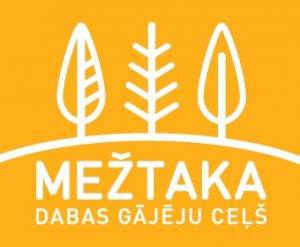Living memories of Gauja plotters
For a long time, the River Gauja used to be an important waterway for rafting timber to Riga. The most expensive and dangerous part of the route was the section between the estuaries of the Gauja and Daugava, where the trees had to be floated by sea. For this reason, the construction of the Gauja–Daugava waterway was launched in 1899 and the 3 km-long Gauja–Small Baltezers Canal was dug as the first phase of the project. Since 1903, the Canal has been falling into Small Baltezers Lake in Alderi. The name of the village comes from the Alderi Manor and a famous brewery, which was once located here.
The floating of rafts through the Gauja–Baltezers Canal was only stopped in 1972. For more than 60 years, the village of Alderi was a kind of rafter republic. We went to Alderi to see Ēriks Kārlis Gumbelis, who calls himself one of the last Gauja raftsmen, to find out more. Ēriks is a little over 80, and he arrives a little late because he has been playing novuss with his companions at the Ādaži Club. We learn that he also delivers the local newspaper “Ādažu Vēstis” once a month.
We meet near a grocery store, where we can see the last rafter cabin still to be found in Latvia. For two months a year, during timber-rafting, it used to sit on the so-called tail-raft, and raftsmen spent their leisure time and nights there. There had also been a kitchen on the rafts and a lady cooking the raftsmen’s soup. If the weather was lousy, the raftsmen could also got some vodka, 100 grams for each.
Ēriks himself comes from Saulgale, a place near Jelgava, which is surrounded by the waters of the River Lielupe. Trained as a miller, after 1949, he could not any longer find a job in the profession, so he started the work as a raftsman on the Lielupe and was later transferred to Alderi, where after the military service he married his wife Valija. His brother-in-law also was a raftsman. Since then, Ēriks has been living in Alderi.
At the time, there were four timber rafting offices: Lielupe, Gauja, Lubāns and Daugava. Ēriks knows that the industry used to employ around 750 people in Latvia back then. He himself has done various jobs related to rafts: tied logs with a planing machine, and pulled logs in Strenči, where, by the way, the annual festival of raftsmen has been taking place since 1996. Sometimes the logs got stuck, and then everyone, including accountants and technicians, went to release them.
Next, we go to Alderi Park, which has hosted many raftsmen’s dance parties and competitions. Raftsmen had played bowling, log driving and volleyball. There have been attempts to privatize the park, but luckily all of them have failed. Ēriks is very fond of fishing, but he can’t catch anything in Small Baltezers Lake these days. He remembers that he used to catch the eel in the Daugava, using only a tied alder-twig besom.
On Small Baltezers Lake, there was a so-called sorting garden, however instead of the power of stream used on rivers, on the lake they used the prevailing favourable winds. Ēriks remembers that the entire lake was full of logs at the time, and about 20 people were sorting the logs into the corresponding corridors. Here, there is also the Canal itself where logs are no longer flooded and excavators are working today, deepening the bed and strengthening the shores of the Canal. Ēriks knows that the Canal is being cleaned and upgraded for the European money and in the future will be used for boating.


